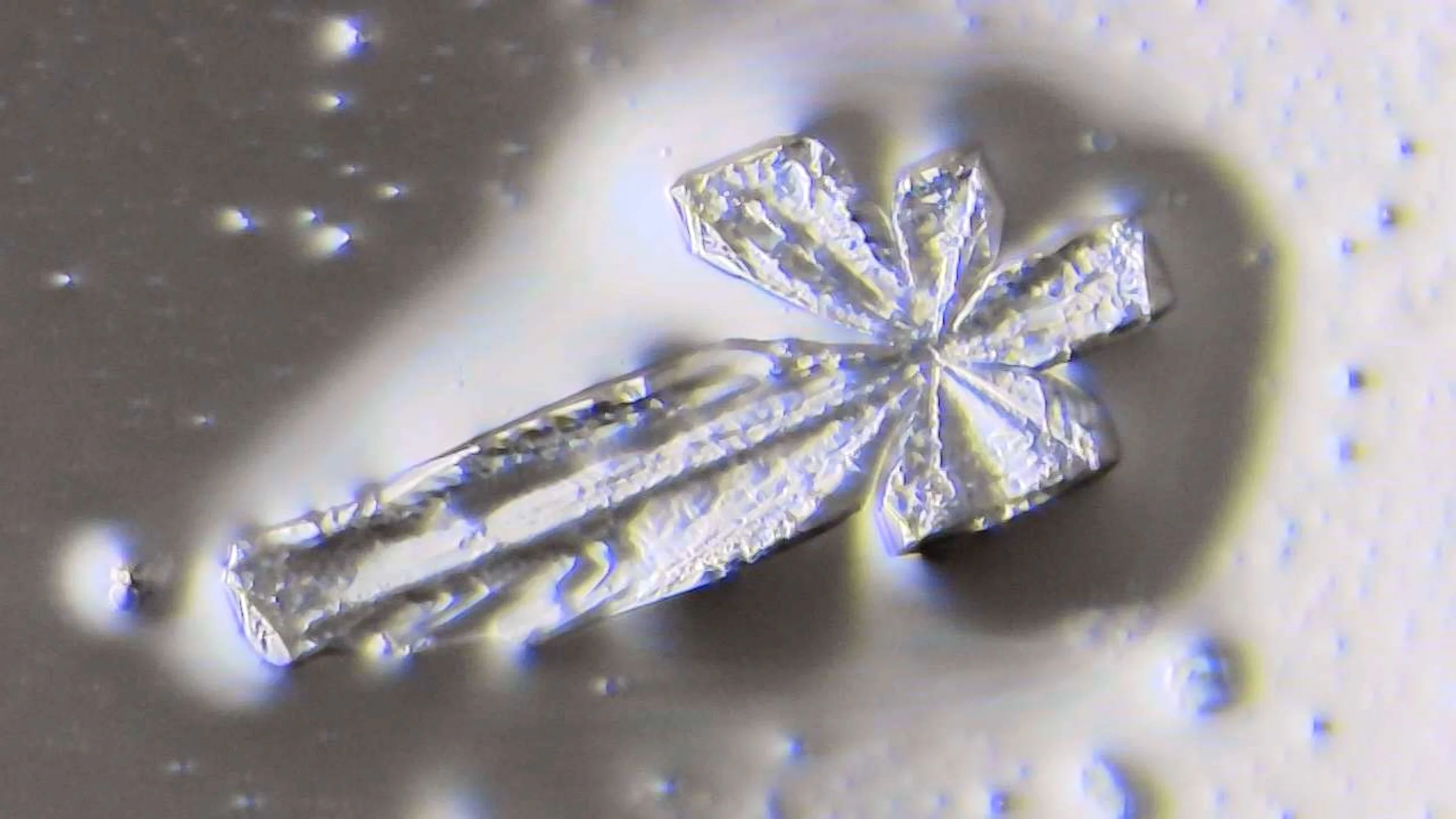Sweat: A Nanoemulsion and a Window into Health
Sweat has traditionally been viewed as just a cooling mechanism, but recent research shows it’s also a goldmine of health information. As a liquid directly derived from blood plasma, sweat is full of electrolytes, proteins, and metabolic byproducts—biomarkers that could provide valuable health insights. But sweat isn’t just a simple liquid; it behaves like a nanoemulsion, a mixture where tiny particles are dispersed in water. Understanding this unique structure can unlock new applications in health monitoring and diagnostics.
nano sweat crystal, © 2023 NanoFraction. All Rights Reserved.
Sweat as a Nanoemulsion: What Does That Mean?
When sweat is released from the body, it’s more than just a watery solution. It contains a complex array of ions, proteins, lipids, and other molecules that form a nanoemulsion—a mixture where extremely small particles and droplets are suspended in water. This nanoemulsion structure affects how sweat spreads, evaporates, and interacts with the skin. Here’s a breakdown of the types and sizes of particles typically found in sweat:
Electrolytes and Small Molecules (0.1-1 nm): These include ions like sodium, chloride, and potassium, which are crucial for hydration and electrolyte balance.
Proteins and Peptides (1-10 nm): Small proteins and cytokines (immune-related signaling molecules) appear in sweat, although in lower concentrations than in blood. Their tiny size allows them to easily disperse in the water matrix.
Lipid Droplets and Sebum Particles (10-100 nm): Sweat often mixes with oils from sebaceous glands, especially on the face and scalp, creating lipid droplets that act as miniature "oil-in-water" emulsions. This mixture is what gives sweat its nanoemulsion-like behavior.
Cellular Debris (100+ nm): Occasionally, larger particles like cell fragments from the skin’s surface may be present in sweat samples.
Why the Nanoemulsion Structure Matters
The nanoemulsion-like properties of sweat are more than a scientific curiosity; they impact both how sweat behaves on the skin and how it can be analyzed:
Rapid Diffusion and Evaporation: Small particles in sweat allow it to spread thinly across the skin, maximizing evaporative cooling and making sweat highly effective for temperature regulation.
Enhanced Interaction with Skin Layers: Tiny particles can penetrate more easily through skin layers, facilitating molecule exchange between the skin and bloodstream. This characteristic also makes sweat ideal for wearables that monitor health through the skin.
Challenges in Analysis and Preservation: The nano-scale particles in sweat are prone to crystallization and evaporation upon exposure to air, which complicates efforts to analyze sweat accurately. Researchers are developing new methods to quickly capture sweat in its natural state to maintain the integrity of these nano-particles.Why Sweat Analysis Is So Valuable
Analyzing sweat as a nanoemulsion provides an innovative approach to non-invasive health monitoring. With wearable technology, for example, sweat could provide real-time data on hydration, electrolyte balance, and even stress or immune response, without the need for blood samples. As technology advances, sweat analysis may become a practical tool for monitoring chronic conditions, athletic performance, or overall wellness.
Imaging Sweat’s Nanoemulsion Components Studying sweat at the nano level requires high-resolution imaging techniques, each offering unique insights but facing limitations.
Electron Microscopy provides visualization of tiny lipid particles or cell fragments, yet struggles with sweat’s quick-drying nature, often compromising the accuracy of observations.
Mass Spectrometry precisely identifies sweat molecules, such as proteins or metabolites, but lacks the ability to reveal particle size.
Dynamic Light Scattering (DLS) measures particle size in colloids and nanoemulsions, offering some insight into sweat’s structure but with limited resolution for nanoemulsions.
NanoFraction’s cutting-edge optical super resolution technology overcomes these limitations by offering a non-invasive, label-free method that captures sweat’s nanoemulsion components with nanometer-level precision. This technology captures real-time, high-resolution images of delicate structures, such as lipid particles, without the risk of sample drying or distortion, while also detailing both particle size and molecular composition. By solving these constraints, NanoFraction unlocks a new level of clarity in sweat research, empowering deeper insight into biomarkers and nano-scale components.
Final Thoughts
Viewing sweat as a nanoemulsion reveals its complexity and potential as a powerful health resource. From electrolytes to protein molecules, sweat’s components reflect real-time changes in the body, making it a promising frontier for non-invasive diagnostics. With NanoFraction’s advanced imaging solutions, you can uncover the true nanoscale structure of sweat and explore its biomarkers in unparalleled detail—opening new doors in personalized health monitoring and wearable technology. Contact us to learn more about how NanoFraction’s technology can support your research at www.nanofraction.com.

